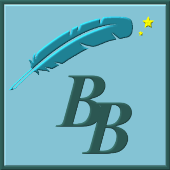Using Roll20 and Zoom to continue your RPG adventures
We found using Zoom and multiple webcams worked well to include remote players in our D&D games. However, social distancing during the pandemic required a different solution since all players were remote. It was time to switch our game to an online platform.
Although a DM could use screen sharing and something simple like PowerPoint to show maps to players, an online platform gives tremendous freedom. Each player can independently explore the area and move their token on the map, just as they can move their own miniature when playing traditionally.
I considered several factors in looking at the different platforms such as Roll20, Fantasy Grounds, and Dungeons & Dragons Online. In the end, I chose Roll20 due its history, features, and great support for D&D, while still being independent of any particular RPG system.
I had always used digital images when crafting maps and props for my campaigns. With an online system, I still use these images but eliminate all that printing and gluing. Even though we play online, I can still use my creative side to develop scenarios that we use to tell stories together.
Traditional vs Digital Maps
Here is an example of what the Yawning Portal tavern looks like using the traditional method of tiles, furniture and props, and PC miniatures.

Using a system like Roll20, a tavern is represented using a background map instead of crafted tiles. Overlaid images represent the furniture and props. PCs are represented by selectable tokens instead of miniatures.

RPG using Roll20
Good communication is critical while gaming. Rather than just use chat, we use a video communication system. Zoom had worked well for us in the past to include remote players, so we continue to use that platform rather than the built-in Roll20 video capabilities. Zoom is robust and allows players to use either a webcam on their PC or the camera on their phone.
When it is time to play a game, everyone joins a Zoom session that I host. All participants log on to their Roll20 account using a web browser. There is no cost to the players to use either Zoom or Roll20. During gameplay, a player will often use two main windows on their PC – one for Roll20 and one for Zoom. A dual monitor setup is helpful but not required for players.

In Roll20, the DM creates a game that players join. These games contain pages of information for different parts of the adventure. These pages can range from simple photographs to large or small-scale maps. As the players progress through the story, the DM flips everyone’s view to a different page of the adventure.
Just as in traditional table-based RPGs, combat revolves around the map in Roll20. The main window contains a background map with movable tokens instead of miniatures. Each player can independently move around their token and zoom or pan their own view of the map.
Although Roll20 supports rolling virtual dice, I prefer rolling real dice. There is something so satisfying to the tactile feel of real dice and the lovely clickity-clack sound they make as they fall down the dice tower.
As the DM, I prefer a three-monitor setup. My main monitor displays the DM view of the game in Roll20. It contains a lot of secret information that I use at runtime such as hidden monsters, treasures, and secret doors. My secondary monitor shows the Zoom session. Finally, the third monitor shows what the players are actually seeing. That way I make sure hidden stuff is staying hidden! I also access reference materials on this monitor.

We used Roll20 to play throughout the pandemic, and it has worked well. With an online platform, we were able to include players from across the country. Best of all, we could even play while I was camping.

Now that vaccines are available, we want to resume in-person gaming while still including our new remote friends. The next post shows you how we solved this problem.
Bitzy the Bard
“Life is an adventure story and you are the star. Choose to play a hero!”


